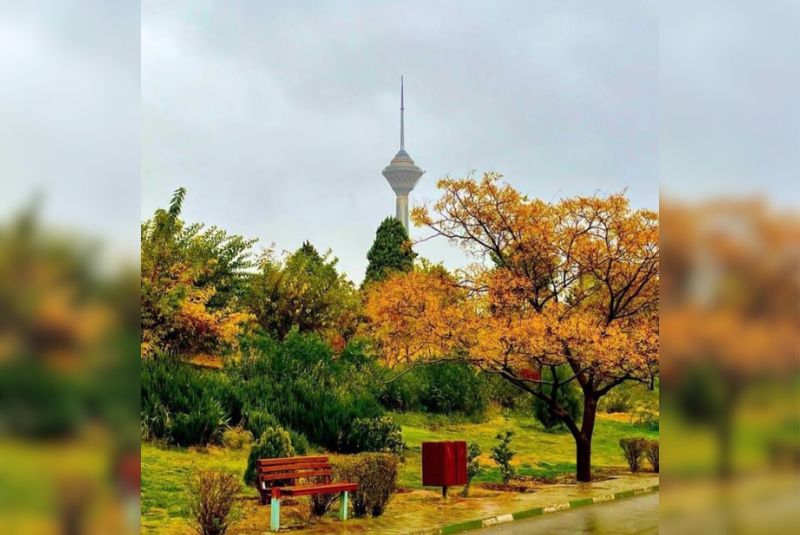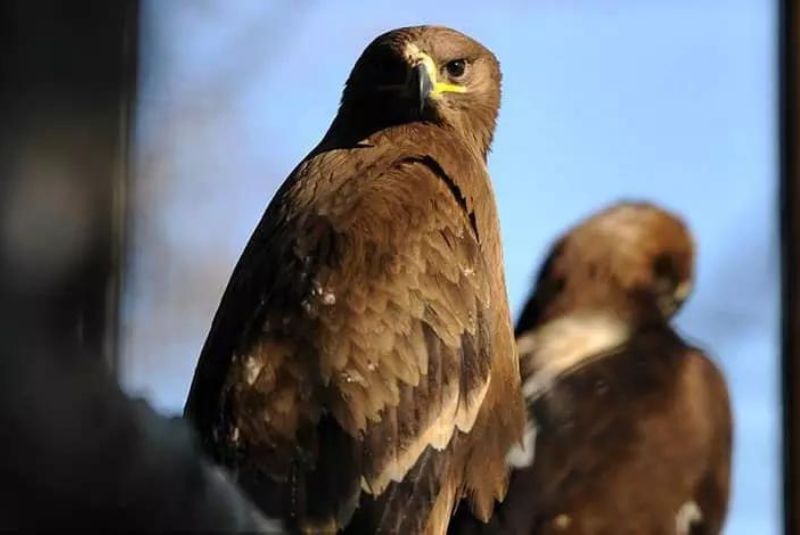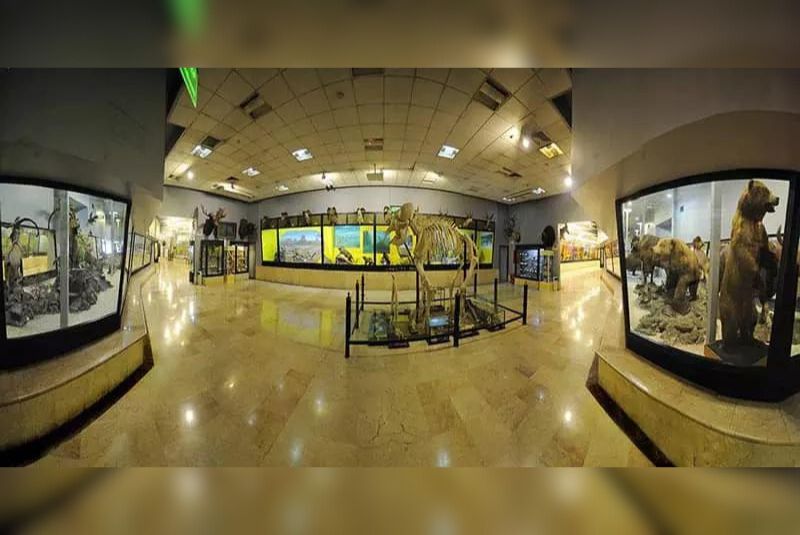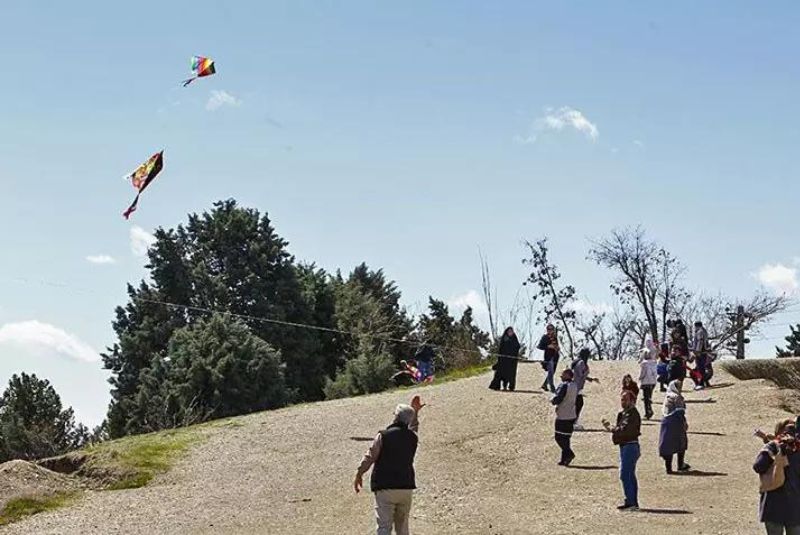Pardisan Park | Tehran's Green Jewel
Located in the bustling city of Tehran, Pardisan Park stands as a verdant oasis, offering respite and recreation to locals and tourists alike.
Spread over 300 hectares, this expansive urban park is a treasure trove of natural beauty and cultural experiences. Pardisan Park is renowned for its diverse attractions, catering to a wide range of interests. Nature enthusiasts can explore over 320 species of plants, including native varieties unique to Tehran's landscape. The park's Wildlife Rehabilitation Center is home to various animals, from wolves and bears to majestic birds like owls and peacocks.
Moreover, Pardisan Park plays a crucial role in Tehran's environmental ecosystem. Positioned strategically in the path of prevailing western winds, the park acts as a natural air purifier, mitigating the effects of pollution in the capital city. Its designation as a smoke-free park underscores its commitment to improving Tehran's air quality, earning it the reputation of being the "lungs of the capital.”
History of Pardisan Park

The historical roots of Pardisan Park trace back to a visionary concept conceived by Ian McHarg, a renowned architect and landscape designer. In the early 1970s, McHarg proposed the idea of creating a multifaceted park that would blend scientific research, education, and recreation while showcasing diverse ecosystems. His ambitious plan, backed by the Environmental Protection Organization, aimed to integrate Iranian culture with environmental principles, emphasizing humanity's interconnectedness with nature.
Despite McHarg's innovative vision, the park's development was hindered by significant political events. The Islamic Revolution in 1979 disrupted the project's momentum, causing delays and logistical challenges. The subsequent Iran-Iraq War further stalled progress, shifting priorities towards stabilizing existing plans rather than expanding the park's scope. However, these obstacles did not diminish the park's significance; instead, they underscored its resilience and enduring value as a green oasis in Tehran.
"Pardisan Park history" encapsulates the park's journey from conception to its present-day status as a vital environmental asset in Tehran. Ian McHarg's original design principles continue to shape Pardisan Park, blending educational initiatives with recreational amenities and showcasing Iran's rich biodiversity. Despite its complex history, Pardisan Park stands as a testament to the enduring legacy of visionary urban planning and environmental stewardship.
| Suggestion: Nahjol Balaghe Park - Nature-Crafted Playground in Tehran
Attractions and Facilities of Pardisan Park

Among the captivating attractions within Pardisan Park, the Wildlife Rehabilitation Center and Biodiversity Museum stand out as unique highlights, offering visitors immersive experiences with nature and conservation.
The Wildlife Rehabilitation Center is a sanctuary for injured and displaced animals, providing specialized care and treatment to diverse species. Here, visitors can witness the remarkable efforts to rehabilitate animals affected by geographical challenges or illegal trade activities. From majestic wolves and bears to colorful peacocks and owls, the center showcases a wide array of wildlife, fostering awareness about conservation efforts in Iran.
In contrast, the Biodiversity Museum serves as a treasure trove of natural history and genetic resources. Opened in 2004, this museum boasts an extensive collection of plant and animal specimens, including rare and endemic species native to Iran. Taxidermy displays bring these creatures to life, offering educational insights into the country's rich biodiversity. With its diverse exhibits and educational programs, the Biodiversity Museum at Pardisan Park is a must-visit destination for nature enthusiasts and conservation advocates alike.
| Read more: Sorkheh Hesar National Park in Tehran
Recreational Activities of Pardisan Park
Pardisan Park offers a plethora of recreational activities that cater to outdoor enthusiasts of all ages. One of the park's main attractions is its extensive network of hiking and biking trails, winding through lush greenery and diverse landscapes. Whether you're seeking a leisurely stroll or an invigorating hike, the park's trails provide an ideal setting to explore nature and enjoy scenic views.
For cycling enthusiasts, Pardisan Park features designated bike paths that offer a thrilling experience amid the park's serene environment. Cyclists can traverse the park's trails, taking in the fresh air and picturesque surroundings along the way.
Another popular activity at Pardisan Park is kite flying. The park's spacious kite field invites visitors to unleash their creativity and fly colorful kites against the backdrop of blue skies and greenery. Families and friends often gather here to enjoy this timeless pastime and make lasting memories in the heart of Tehran.
| Also read about: Bame Tehran - Exploring Iran's Alpine Retreat
Educational Opportunities of Pardisan Park
Pardisan Park offers unique educational opportunities that promote environmental awareness and engagement with nature. The Nature School, established in 2017, serves as a dedicated space for children aged 4 to 12 to explore and learn about the natural world. Here, kids participate in interactive programs that cover topics such as plant life cycles, animal habitats, climate, and nature-related games. The Nature School fosters a sense of appreciation for the environment and encourages responsible interactions with nature.
Another notable attraction is the environmental cinema, a pioneering initiative in Iran located within Pardisan Park. This specialized cinema showcases films centered around wildlife and environmental issues, providing an engaging platform for visitors to learn about conservation efforts and environmental challenges. The screenings, held on Thursdays and Fridays, attract diverse audiences and contribute to raising awareness about the importance of preserving our natural heritage.
| Suggestion: Tehran's Mellat Park
Others
- The National Water Museum, situated within Pardisan Park, showcases a captivating display of Iran's water development history. This museum features exhibits highlighting various aspects of water management, including the engineering marvels of Qanat systems and ancient reservoirs. Visitors can explore the significance of water in Iranian culture and the evolution of water extraction techniques over the centuries.
- The Nahj al-Balaghe suspension bridge is a prominent attraction within Pardisan Park, connecting two adjacent parks and offering breathtaking views of the surrounding area. The bridge spans 285 meters and stands 65 meters above ground, providing a stunning perspective of Tehran's skyline, including landmarks like the Milad Tower. Adventure seekers can enjoy activities such as swinging, rappelling, and bungee jumping from the bridge, adding an exciting dimension to the park's recreational offerings.
| Read more: Qeytariyeh Park
Natural Environment and Wildlife of Pardisan Park

Nestled in Tehran, Pardisan Park is an expansive urban oasis renowned for its diverse landscape and rich biodiversity. The park's landscape is a tapestry of forests, meadows, and winding trails, offering visitors a serene escape from the bustling city. Originally a collection of hills adorned with pistachio and wild almond trees, Pardisan Park now hosts approximately 320 different plant species, including native varieties from Tehran and surrounding regions. This botanical diversity not only enhances the park's aesthetic appeal but also contributes to vital ecosystem services.
Central to Pardisan Park's conservation efforts is the Wildlife Rehabilitation Center, a beacon of wildlife protection and habitat restoration. The center serves as a haven for injured or displaced animals affected by geographical challenges or illegal wildlife activities. Here, a dedicated team of experts provides medical care, rehabilitation, and eventual release back into the wild for various species, including carnivores, herbivores, birds, and reptiles. The Wildlife Rehabilitation Center's initiatives play a pivotal role in safeguarding Tehran's native wildlife populations.
Pardisan Park is home to a diverse array of native wildlife, reflecting Tehran's ecological richness. Visitors can encounter wolves, bears, peacocks, owls, and other indigenous species within the park's boundaries. The rehabilitation process at the center underscores Pardisan Park's commitment to wildlife conservation, addressing the impacts of habitat loss and human-wildlife conflicts.
The conservation efforts and diverse landscapes of Pardisan Park Tehran epitomize its role as a steward of environmental sustainability. Through its botanical collections, rehabilitation programs, and educational initiatives, Pardisan Park continues to inspire visitors and residents alike to appreciate and protect Tehran's natural heritage. As visitors explore the park's forests, encounter rehabilitated wildlife, and learn about conservation efforts, they become integral participants in Pardisan Park's enduring mission of ecological preservation.
| Suggestion: Valiasr Street - One of the Most Beautiful Streets in the World
Cultural and Educational Aspects of Pardisan Park

Pardisan Park in Tehran is not merely a green space but a cultural and educational hub deeply rooted in Iran's natural heritage and environmental consciousness. The park's design and exhibits reflect a profound appreciation for Iranian culture and biodiversity. Originally envisioned by landscape architect Ian McHarg, Pardisan Park's layout integrates environmental principles with traditional Iranian architecture. McHarg's vision aimed to showcase diverse ecosystems—from tundra to tropical forests—within one cohesive setting, emphasizing the interconnectedness of nature and humanity.
At the heart of Pardisan's cultural and educational offerings is the Biodiversity Museum, a testament to Iran's rich biological diversity. This museum, inaugurated in 2004, houses a comprehensive collection of plant and animal species, including rare endemic species like the Persian Onager and Cheetah. Through interactive exhibits and educational programs, the Biodiversity Museum engages visitors in the exploration of Iran's natural history and genetic resources.
Complementing the museum is the Nature School, a unique educational institution within Pardisan Park that fosters environmental literacy among children. The Nature School offers hands-on programs focused on plant cultivation, animal habitats, and climate education. By immersing young learners in nature-related activities, the school instills values of environmental stewardship and conservation.
Pardisan Park serves as a vital platform for promoting environmental awareness and sustainability in Tehran. Through its exhibits, educational programs, and outdoor activities, Pardisan cultivates a sense of responsibility toward nature among visitors of all ages. The park's initiatives, such as the environmental cinema and guided tours, encourage public engagement with pressing environmental issues.
In navigating Pardisan Park's cultural and educational landscape, visitors can access a Pardisan park map detailing key attractions and facilities. This map enhances the visitor experience by highlighting notable landmarks, trails, and educational venues. Ultimately, Pardisan Park exemplifies the intersection of cultural heritage and environmental advocacy, inspiring a new generation of environmental stewards in Iran.
| Read more: Laleh Park in Tehran
Visiting Information and Accessibility

Accessing Pardisan Park is convenient and straightforward, thanks to its strategic location near major transportation routes in Tehran. Visitors can reach the park via subway, highways, or neighboring neighborhoods. The Maidan Sanat subway station is the closest stop to Pardisan Park, providing easy access to those using public transportation. From Maidan Sanat, visitors can take a taxi directly to the park entrance.
For those traveling by car, Pardisan Park is bordered by several highways, including the Hemat Highway and Sheikh Fazlullah Nouri. These routes offer direct access to the park's entrances, making it accessible to visitors from across the city. Additionally, nearby neighborhoods like Shahrak Gharb and Marzdaran Boulevard provide convenient access points for pedestrians and cyclists.
Visitor facilities at Pardisan Park ensure a comfortable and enjoyable experience for all guests. Ample parking spaces are available near the park entrances, accommodating both private vehicles and taxis. Restrooms are strategically located throughout the park for convenience.
When it comes to dining options, Pardisan Park offers a variety of choices for visitors. From casual buffets to sit-down restaurants, Pardisan park restaurants cater to different tastes and preferences. These dining establishments provide a relaxing setting to enjoy a meal or refreshment amidst the park's natural surroundings.
For pet owners planning to visit Pardisan Park, guidelines are in place to ensure a pleasant experience for all visitors. Pets are welcome in the park but must be kept on a leash at all times. Owners are responsible for cleaning up after their pets to maintain the park's cleanliness and hygiene standards. By following these guidelines, pet owners can enjoy exploring Pardisan Park with their furry companions while respecting other visitors and wildlife.
| Also might be interesting: Park-e Shahr in Tehran | Tehran's City Park
Finally!
Pardisan Park stands out as a vibrant green oasis in the heart of Tehran, offering a diverse range of attractions and activities for visitors of all ages. From its Wildlife Rehabilitation Center, where visitors can witness conservation efforts firsthand, to the Biodiversity Museum showcasing Iran's rich natural heritage, Pardisan Park is a treasure trove of educational and recreational opportunities.
Tourists are encouraged to explore Pardisan Park to experience its unique blend of nature, culture, and education. Whether you're strolling along the park's seven-kilometer walking path, cycling through lush forests, or enjoying a film at the environmental cinema, there's something for everyone to enjoy.
Beyond its attractions, Pardisan Park plays a vital role in promoting environmental stewardship. As a smoke-free park and a hub for environmental education, Pardisan raises awareness about the importance of preserving green spaces and protecting wildlife. By visiting Pardisan Park, tourists contribute to the ongoing efforts to conserve Tehran's natural beauty and promote sustainable practices.
Share your story!
Comment below and let us know about your Experience.
Your story inspires others!


Comment
Leave a Comment